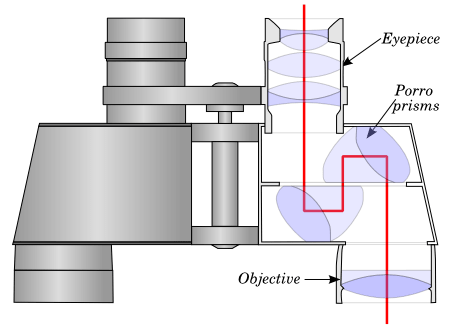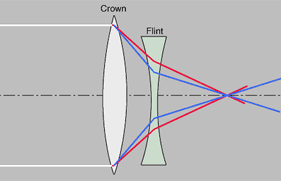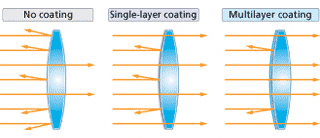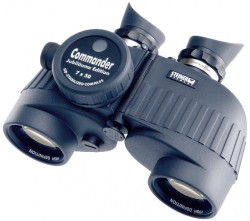How Binoculars are Made
Binoculars 101: How they are made
I recently came across this really interesting video produced by the Discovery Channel on How Binoculars are Made from their “How It Is Made Series” and which gives us a fantastic insight into the main steps involved in manufacturing a pair of binoculars.
The program makers obviously gained access to the Steiner factory as the example they use in the video is that of them making a pair of Steiner Commander 7x50 XP Marine Binoculars:
Whilst the video only gives us a rather simplified demonstration of the main steps involved in making binoculars it does briefly show a number of interesting steps to take note of, which give you a great insight into not only how they work, but some of the steps take to ensure that you get the best view possible:
 Poro Prisms: On the video they mention that two prisms are stuck together to turn the image the right way up, but what they don’t mention is that the example binocular, the Steiner Commander XP Marine Binocular uses a porro prism design.
Poro Prisms: On the video they mention that two prisms are stuck together to turn the image the right way up, but what they don’t mention is that the example binocular, the Steiner Commander XP Marine Binocular uses a porro prism design.
The image on the right will give you a better idea of just how these two prisms are positioned in relation to each other and exactly where they are located within the housing of the binocular. It will also help you understand why most porro prism binoculars have this distinctive shape.
 Objective Lenses: On the video they mention that two lenses are joined together because a “double lens limits a kind of distortion that causes fringes of color to appear around the image.”
Objective Lenses: On the video they mention that two lenses are joined together because a “double lens limits a kind of distortion that causes fringes of color to appear around the image.”
This distortion that they are referring to is known as Chromatic aberration which causes color fringing.
The two lens elements joined together is known as an achromatic doublet lens and as they say it is designed to limit the effects of chromatic and spherical aberration. This is achieved by the use of a strong positive lens made from a low dispersion glass like crown glass coupled with a weaker high dispersion glass like flint glass can correct the chromatic aberration for two colors (typically red and blue). Such doublets are often cemented together (called achromat doublets) and may be used in compound lenses. An achromat doublet does not completely eliminate chromatic aberration, but can eliminate it for two colors (typically red and blue). Cemented doublets of this type are a mainstay of lens design.
To limit the amount of Chromatic aberration even further, some high end binoculars will use extra low dispersion glass in one of these lens elements.
Some very high end binoculars like the excellent Vortex Razor HD Binoculars will go even further, using ED glass in an apochromat triplet lens that has three lens elements and thus the chromatic aberration for three colors can be eliminated.
Anti-Reflection Coatings: It is very interesting that they show you the mineral pellets that they then evaporate into microscopic particles that then coat the lenses to produce the anti reflection coatings on them.

Most modern binoculars have these anti-reflection coatings on at least some of their air to glass surfaces, which as they say in the video, assist with the light transmission: Part of the light that passes through the lens is reflected by the front (incident light) and rear (exiting light) surfaces. This reduces the amount of light passing through the lens, which potentially means that they will not be as bright as on binoculars that transmit more light.
For more check out my complete guide to Anti-Reflection Lens Coatings on Binoculars
Fog & Waterproofing: It is interesting to see them removing the air and replacing it with dry nitrogen gas to make the binoculars fog proof and they also test the binoculars a day later to check that there is no leak and then they all get tested by fully submerging them under water.
Steiner Commander XP Marine Binoculars
 The Commander XP range are Steiner’s top of the range of marine binoculars and are available in two sizes, a 7x30 or a 7x50. Each size then comes with or without an illuminated and stabilized compass, giving a total of four different models:
The Commander XP range are Steiner’s top of the range of marine binoculars and are available in two sizes, a 7x30 or a 7x50. Each size then comes with or without an illuminated and stabilized compass, giving a total of four different models:
- Commander XP 7x50 C
- Commander XP 7x50
- Commander XP 7x30 C
- Commander XP 7x30
Main Features
- Multi-coated Lenses
- Polycarbonate Body Construction
- Fog & Waterproof with special sealing technologies that resist water pressure to ten meters
- Water-repellant coatings on the lenses
- Two models feature an illuminated HD-compass features an integrated reticle for ease in taking a bearing and estimating distance
- ClicLoc exchangeable eyecups provide three different pairs of eyecups to meet your viewing needs
- There is a 10-year-limited warranty with the Steiner Commander XP C Binoculars and a 30-year-limited warranty for the Commander XP models

 Article | Posted by Best Binocular Reviews
Article | Posted by Best Binocular Reviews 
 Categories:
Categories:  Tags:
Tags: 
